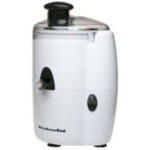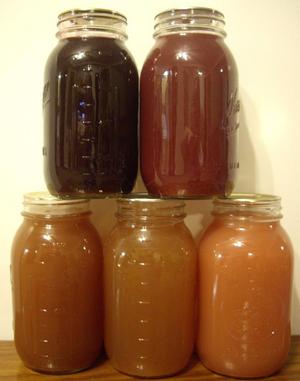Juicers are becoming increasingly popular in the home, and it’s not hard to see why. Few would argue against getting more fruits and vegetables in your diet, and juicers offer a painless (and tasty) way to do just that.
But when deciding on whether to purchase any kitchen appliance, the question is not whether it’s useful. The question is whether it will actually be used. While websites and Jack Lalanne infomercials are eager to rattle off the benefits of juicing, the downside may only become apparent after you’ve plunked down your money.
So, would a juicer occupy a permanent place on your counter top, or would it go the way of that quesadilla maker you bought two years ago that’s now tucked away in your storage space? Since the pro’s are already out there, here are a few con’s to balance things out and help you decide whether juicing is for you. While these points focus on centrifugal juicers – the most affordable types of multi-purpose juicers available – they apply to all juicers to some degree.
Buying fresh produce for your juicer could get expensive
Most of the time, making something on your own saves money. However, that’s not necessarily the case when making your own juice. In addition to the up-front cost of buying the juicer, there’s the ongoing expense of the fresh fruits and vegetables that go into it. Before buying a juicer, consider whether you can afford the higher grocery bills that are likely to come with it.
You might be surprised at how little juice a piece of fruit actually produces. If you have visions of serving your family fresh OJ every morning, consider that it takes about four oranges to produce a small glass. That’s a lot of trips to the grocery store (not to mention a lot of peeling).
Sadly, one of the cheapest and best-tasting fruits – the banana – cannot be juiced. On the other hand, carrots and apples are affordable, produce a good amount of juice, and combine well with more expensive fruits and vegetables.
Juicers can be messy
Different juicer models vary in ease of cleaning, but there’s no getting around the fact that you’re throwing tender ripe produce into a contraption designed to obliterate it. Each time you use your juicer, you will have to wash pieces of the equipment, whether it’s a simple rinse or a trip through the dishwasher. You’ll also likely have some scrubbing to do, as the blade and screen used to separate the pulp from the juice collects a lot of gunk.
You may also find that particles pop out of the juicer when you drop fruit or vegetables into it. Expect to clean up bits of produce from your counter top, cupboards, even your hair.
Juicers waste a lot of pulp
Most people have a hard time eating the recommended amount of fruit and vegetables. Juicers offer a solution by allowing you to drink your fruit and vegetables, getting most of the nutrition in a form that’s easy to swallow. In fact, fruits and vegetables are easier to digest in juice form, and therefore juicing may actually be better for you.
On the other hand, simply drinking the juice means you miss out on the vitamins and fiber contained in the pulp. Some people might also simply be distressed by the amount of pulp that’s wasted in the juicing process. While there are a lot of suggestions out there for what to do with pulp from a juicer, the truth is that you’re likely going to be throwing a lot of it away.
The bottom line: if your main concern is getting more fruits and vegetables in your diet, you might consider simply eating more of them.
Juicers aren’t as convenient as they might seem
To get the maximum health benefit from your juice, you need to drink it immediately after you make it. While you can whip up a large batch of juice for the week, storing it in the refrigerator will destroy most of the nutrients within a couple days. In other words, for the best results, you need to make the juice fresh each time you drink it.
And making the juice isn’t as easy as the infomercials would have you believe. While many juicers advertise that you insert a whole apple without peeling, that’s only true if the apple will actually fit. If not, you’ll have to quarter the apple before feeding it in. In fact, most fruits and vegetables require some sort of preparation before you can send them through the juicer, whether it’s peeling, trimming, or halving. Combine this with the amount of produce required to produce a decent glass of juice, and it can be a tiresome amount of work.
Juicers take up space
Juicers tend to be large, and therefore take up a lot of space on your counter. If you’re not planning to use your juicer on a daily basis, you might find it’s worth neither the precious counter space nor the effort to pull it out of a cupboard and assemble it before each use. Keep in mind that the juicer may have a long feeder tube that forces produce down the chute, which may preclude storing the juicer under an overhanging cupboard (at least if you don’t want to move it before every use).
Finally, consider the space needed to clean your juicer. If you have to rinse many different parts after each use, those parts will need to sit somewhere while drying.
Sources:
http://www.happyjuicer.com/
Personal experience



